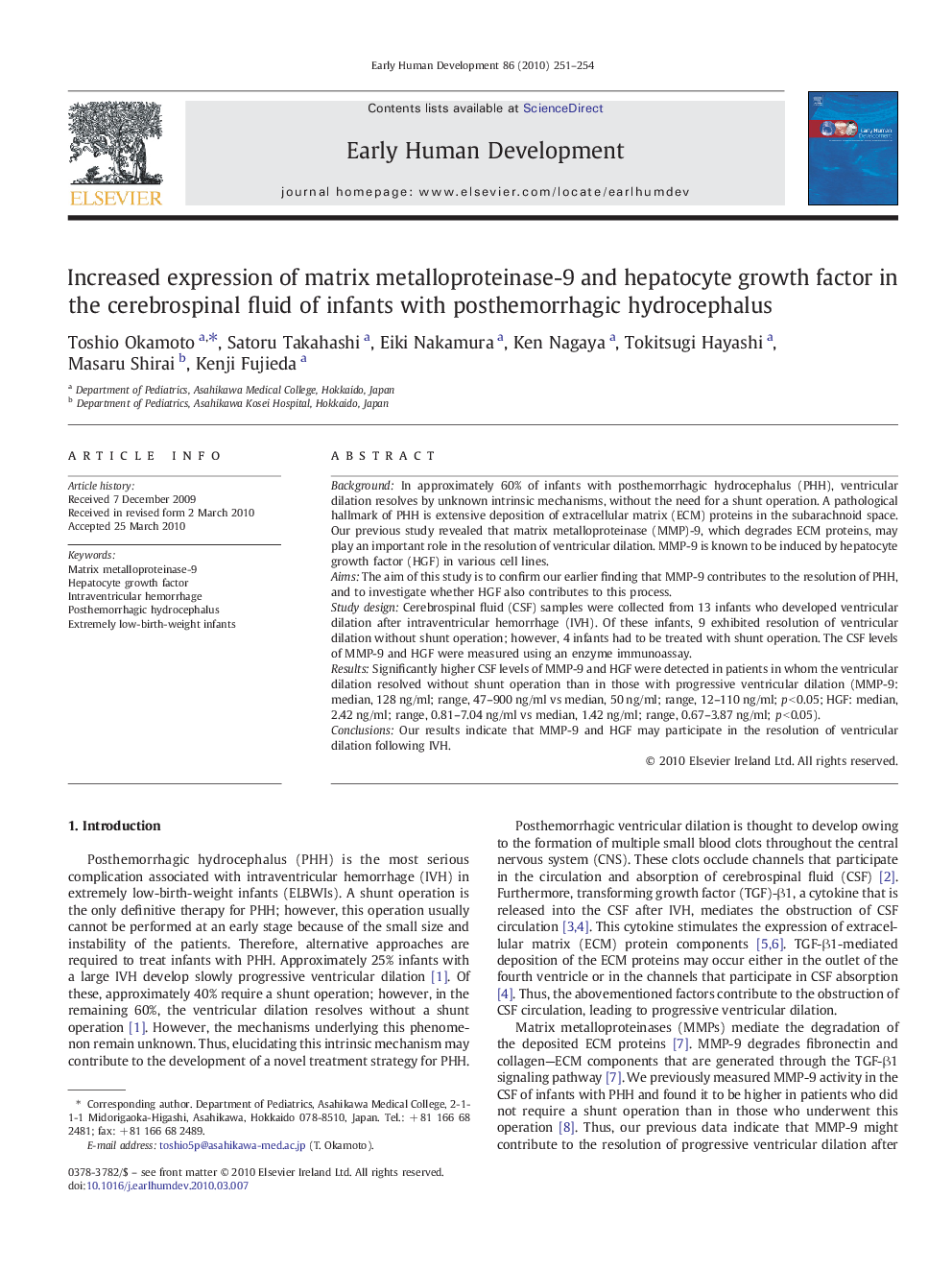| Article ID | Journal | Published Year | Pages | File Type |
|---|---|---|---|---|
| 3918463 | Early Human Development | 2010 | 4 Pages |
BackgroundIn approximately 60% of infants with posthemorrhagic hydrocephalus (PHH), ventricular dilation resolves by unknown intrinsic mechanisms, without the need for a shunt operation. A pathological hallmark of PHH is extensive deposition of extracellular matrix (ECM) proteins in the subarachnoid space. Our previous study revealed that matrix metalloproteinase (MMP)-9, which degrades ECM proteins, may play an important role in the resolution of ventricular dilation. MMP-9 is known to be induced by hepatocyte growth factor (HGF) in various cell lines.AimsThe aim of this study is to confirm our earlier finding that MMP-9 contributes to the resolution of PHH, and to investigate whether HGF also contributes to this process.Study designCerebrospinal fluid (CSF) samples were collected from 13 infants who developed ventricular dilation after intraventricular hemorrhage (IVH). Of these infants, 9 exhibited resolution of ventricular dilation without shunt operation; however, 4 infants had to be treated with shunt operation. The CSF levels of MMP-9 and HGF were measured using an enzyme immunoassay.ResultsSignificantly higher CSF levels of MMP-9 and HGF were detected in patients in whom the ventricular dilation resolved without shunt operation than in those with progressive ventricular dilation (MMP-9: median, 128 ng/ml; range, 47–900 ng/ml vs median, 50 ng/ml; range, 12–110 ng/ml; p < 0.05; HGF: median, 2.42 ng/ml; range, 0.81–7.04 ng/ml vs median, 1.42 ng/ml; range, 0.67–3.87 ng/ml; p < 0.05).ConclusionsOur results indicate that MMP-9 and HGF may participate in the resolution of ventricular dilation following IVH.
